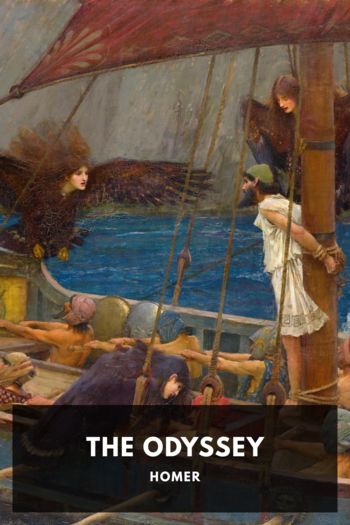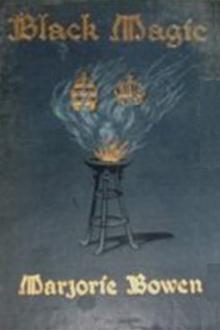The Wrecker, Clive Cussler [book club suggestions .TXT] 📗

- Author: Clive Cussler
Book online «The Wrecker, Clive Cussler [book club suggestions .TXT] 📗». Author Clive Cussler
Leaving the lights of Burbank behind, rolling past darkened farmhouses, he quickly adjusted to the starlight. Half an hour later, ten miles north of Los Angeles, he slowed down, recognizing the jagged angles and dense layers of latticework of an iron trestle crossing a dry riverbed. He trundled across the trestle. The rails curved sharply to the right to parallel the riverbed.
He stopped a few yards after he felt the wheels click across a joint where two rails butted together. He unloaded his tools and knelt down on the crushed-stone ballast, cushioning his knees on a wooden crosstie. Feeling the joint between the rails in the dark with his fingers, he located the fishplate, the flat piece of metal fastening the rails to each other. He pried up the spike that anchored the fishplate to the tie with his spike puller. Then he used his track wrench to loosen the nuts on the four bolts that secured the fishplate to the rails and yanked them out. Tossing three of the bolts and nuts and the fishplate down the steep embankment, where even the sharpest-eyed engineer could not see them in his headlight, he threaded the last bolt through a hole in the shank of the hook.
He swore at a sudden stab of sharp pain.
He had cut his finger on a metal burr. Cursing the drunken blacksmith who hadn’t bothered to file smooth the edges of the hole he had drilled, he wrapped his finger in a handkerchief to stop the bleeding. Clumsily, he finished screwing the nut on the bolt. With the wrench, he made it tight enough to hold the hook upright. The open end faced west, the direction from which the Coast Line Limited would come.
The Coast Line was a “flyer,” one of the fast through passenger trains that sped across long distances between cities. Routed via new tunnels through the Santa Susana Mountains, from Santa Barbara to Oxnard, Burbank, and Glendale, she was bound for Los Angeles.
Suddenly, the Wrecker felt the rail vibrate. He jumped to his feet. The Coast Line Limited was supposed to be running late tonight. If that was she, she had made up a lot of time. If it wasn‘t, then he had gone to great effort and taken dangerous risks to derail a worthless milk train.
A train whistle moaned. Quickly, he grabbed the spike puller and yanked up spikes that were holding the rail to the wooden ties. He managed to pry eight loose before he saw a glow of a headlight up the line. He threw the spike puller down the steep embankment and jumped onto the Velocipede and pedaled hard. Now he heard the locomotive. The sound was faint in the distance, but he recognized the distinctive clean, sharp huff of an Atlantic 4-4-2. It was the Limited, all right, and he could gauge by the rapid beat of the steam exhausted from her smokestack that she was coming fast.
THE ATLANTIC 4-4-2 PULLING the Coast Line Limited was built for speed.
Her engineer, Rufus Patrick, loved her for it. The American Locomotive Company of Schenectady, New York, had fitted her with enormous eighty-inch drive wheels. At sixty miles per hour, the four-wheeled engine truck in front held her on the rails as steady as the Rock of Ages while a two-wheeled truck in back supported a big firebox to generate plenty of superheated steam.
Rufus Patrick would admit that she was not that strong. The new, heavier steel passenger cars coming along soon would demand the more powerful Pacifies. She was no mountain climber, but for blazing speed on a flat, pulling a crack flyer of wooden passenger cars across long distances, she was not to be beat. Her identical sister had been clocked the previous year at 127.1 mph, a speed record unlikely to be bested anytime soon, thought Patrick. At least not by him, not even tonight running late, not when he was hauling ten passenger cars full of folks hoping to get home safe. Sixty was just fine, flying at a mile a minute.
The locomotive’s cab was crowded. In addition to Rufus Patrick and his fireman, Zeke Taggert, there were two guests: Bill Wright, an official of the Electrical Workers Union who was a friend of Rufus‘s, and Bill’s nephew, his namesake Billy, whom he was accompanying to Los Angeles, where the boy was to begin an apprenticeship in a laboratory that developed celluloid film for moving pictures. When they had last stopped for water, Rufus had walked back to the baggage car, where they were stealing a free ride, and invited them up to the cab.
Fourteen-year-old Billy couldn’t believe his amazing luck to be riding in a locomotive. He’d been mooning over trains rumbling past his house his whole life and been up all night excited about this trip. But he had never dreamed he could actually ride up front in the cab. Mr. Patrick wore a striped cap just like you saw in pictures and was the surest, calmest man Billy had ever seen. He had explained what he was doing every step of the way, as he sounded two long blasts on the whistle and started the train moving again.
“We’re off, Billy! I’m dropping the Johnson bar to full forward. All the way forward to go ahead, all the way back for reverse. We can go just as fast backward as forward.”
Patrick gripped a long, horizontal bar. “Now I’m opening the throttle, sending steam to the cylinders to turn the drive wheels, and I’m opening the sand valve to get adhesion on the rails. Now I’m pulling back on the throttle so we don’t start too fast. You feel her bite and not slipping?”
Billy had nodded eagerly. She had picked up speed smooth as silk as Patrick began notching out the throttle.
Now rolling toward





Comments (0)